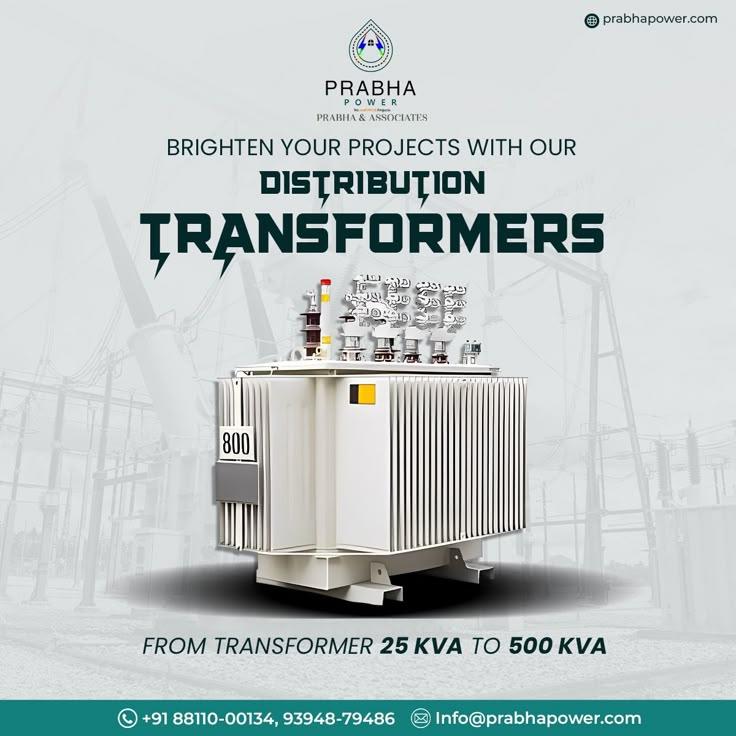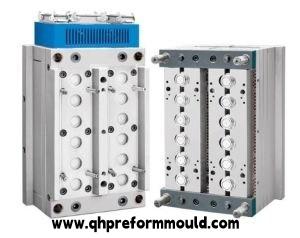Patrocinado
Types and Applications of a Distribution Transformer

In today’s world, electricity plays a key role in every industry, business, and household. To ensure that electrical power reaches consumers safely and efficiently, several electrical devices are used, and one of the most essential among them is the distribution transformer. These transformers help deliver the correct voltage levels for safe use in homes, offices, and industrial setups. Understanding the types and applications of distribution transformers is important to know how power distribution systems work effectively.
What is a Distribution Transformer?
A distribution transformer is an electrical device that converts high voltage electricity from power lines into lower voltages suitable for use in residential, commercial, and industrial applications. It is the final stage in the electrical power distribution process before the electricity reaches the end user.
In simple terms, while power plants generate electricity at high voltages, these voltages must be reduced before they can be used by consumers. The distribution transformer performs this voltage reduction safely and efficiently.
Typically, distribution transformers operate at voltages below 33 kV for industrial use and 433–230 volts for household use. They are designed to deliver power with minimal energy loss and are mostly installed near load centers like residential colonies, commercial complexes, or factories.
Working Principle of a Distribution Transformer
The working principle of a distribution transformer is based on electromagnetic induction. It consists of two windings — a primary winding and a secondary winding — wound around a laminated magnetic core. When alternating current (AC) passes through the primary winding, it creates a magnetic flux that induces a voltage in the secondary winding.
The voltage ratio between the primary and secondary windings determines whether the transformer is stepping up or stepping down the voltage. In the case of a distribution transformer, it is always a step-down transformer, meaning it reduces high transmission voltage to a lower usable voltage.
Main Components of a Distribution Transformer
-
Core:
The magnetic core is the central part that supports the windings. It provides a low reluctance path for the magnetic flux. Cores are usually made of high-grade silicon steel laminations to minimize energy losses. -
Windings:
These are copper or aluminum coils wound on the core. The primary winding receives high voltage input, and the secondary winding delivers the lower voltage output. -
Insulating Oil:
Transformer oil is used for cooling and insulation. It helps in dissipating heat produced during operation and provides electrical insulation between internal components. -
Conservator Tank:
This tank stores extra insulating oil and accommodates oil expansion during temperature changes. -
Breather:
It contains silica gel to absorb moisture from the air entering the conservator tank, keeping the oil dry. -
Bushing:
Bushings provide insulated terminals for electrical connections of both high and low-voltage sides. -
Tap Changer:
A tap changer is used to adjust the output voltage within certain limits to compensate for voltage fluctuations in the system.
Types of Distribution Transformers
Distribution transformers come in different types based on construction, insulation medium, and application. Below are the most common types:
1. Oil-Filled Distribution Transformer
This type uses mineral oil for cooling and insulation. The oil circulates through natural convection to carry heat away from the windings and core.
Advantages:
-
High efficiency and long lifespan.
-
Suitable for outdoor installations.
Applications: -
Power distribution networks.
-
Industrial complexes.
-
Rural and urban electricity supply systems.
2. Dry-Type Distribution Transformer
This transformer uses air or other gases instead of oil for cooling. The windings are coated with epoxy resin for insulation.
Advantages:
-
Eco-friendly and low maintenance.
-
Fire-resistant and suitable for indoor use.
Applications: -
Hospitals, schools, and commercial buildings.
-
Underground substations and areas with fire safety requirements.
3. Pole-Mounted Distribution Transformer
These transformers are small units mounted on electric poles and serve nearby residential or commercial areas.
Advantages:
-
Compact design.
-
Easy installation and maintenance.
Applications: -
Rural power distribution.
-
Street lighting and small commercial loads.
4. Pad-Mounted Distribution Transformer
A pad-mounted transformer is installed in a locked steel cabinet on a concrete pad. It is often used in urban areas where underground power distribution is common.
Advantages:
-
Safe for public spaces.
-
Protects against weather and vandalism.
Applications: -
Shopping centers, housing complexes, and office parks.
5. Underground Distribution Transformer
Designed to fit in below-ground vaults, these transformers are part of underground power distribution systems.
Advantages:
-
Ideal for densely populated areas.
-
Reduces visual clutter of overhead lines.
Applications: -
Airports, city centers, and large campuses.
Applications of Distribution Transformers
Distribution transformers are essential in almost every field where electrical power is used. Below are their key applications:
1. Residential Applications
Distribution transformers supply electricity to homes by reducing the high voltage from transmission lines to a safe level, typically 230V for domestic use. They ensure reliable power for household appliances, lighting, and heating systems.
2. Commercial Applications
Offices, shopping malls, hospitals, and educational institutions depend on distribution transformers to receive stable power. These transformers help maintain energy efficiency and reduce power losses during transmission.
3. Industrial Applications
Factories and industrial units use large-scale distribution transformers to operate heavy machinery, motors, and control systems. They provide consistent voltage levels to support smooth operations and prevent equipment damage.
4. Renewable Energy Systems
With the growth of renewable energy sources like solar and wind power, distribution transformers are used to connect these systems to the main power grid. They help in maintaining voltage stability and efficient power delivery.
5. Rural Electrification
Distribution transformers play a critical role in delivering electricity to rural and remote areas. They ensure that villages and small towns receive power for agricultural activities, irrigation systems, and domestic needs.
6. Public Infrastructure
They are also used in public lighting systems, railway networks, and telecommunication facilities. Their efficiency and reliability help in keeping essential services operational.
Advantages of Using a Distribution Transformer
-
Efficient Energy Transfer: Ensures minimal power loss during voltage conversion.
-
Voltage Regulation: Maintains stable voltage levels for safe appliance operation.
-
Durability: Long service life with minimal maintenance when properly managed.
-
Cost-Effective: Reduces energy wastage and overall distribution costs.
-
Safety: Protects equipment and users by delivering controlled voltage.
Maintenance of Distribution Transformers
Regular maintenance is essential for improving the efficiency and lifespan of distribution transformers. Here are a few important practices:
-
Oil Testing: Regularly check the transformer oil for moisture content and dielectric strength.
-
Visual Inspection: Look for leaks, corrosion, or signs of overheating.
-
Load Monitoring: Avoid overloading the transformer to prevent insulation damage.
-
Temperature Control: Ensure cooling systems are working properly.
-
Periodic Cleaning: Keep bushings and terminals clean from dust and debris.
Proper maintenance not only enhances transformer performance but also prevents costly breakdowns and power outages.
Future of Distribution Transformers
With advancements in technology, modern distribution transformers are becoming smarter and more energy-efficient. Smart transformers equipped with IoT sensors can monitor voltage, load, and temperature in real-time. They can also send performance data to operators, making it easier to predict faults before they occur.
The use of eco-friendly insulating materials and better cooling designs will continue to improve energy efficiency while reducing environmental impact.
Conclusion
Distribution transformers are a vital part of the electrical power system, ensuring that electricity is delivered safely and efficiently from the grid to consumers. They come in various types, each designed for specific applications — from homes and offices to industries and renewable energy systems. Proper selection, operation, and maintenance of these transformers ensure stable energy supply and extended service life.
For reliable and high-quality distribution transformer solutions, PRABHA POWER offers efficient and durable products designed to meet modern power needs.





